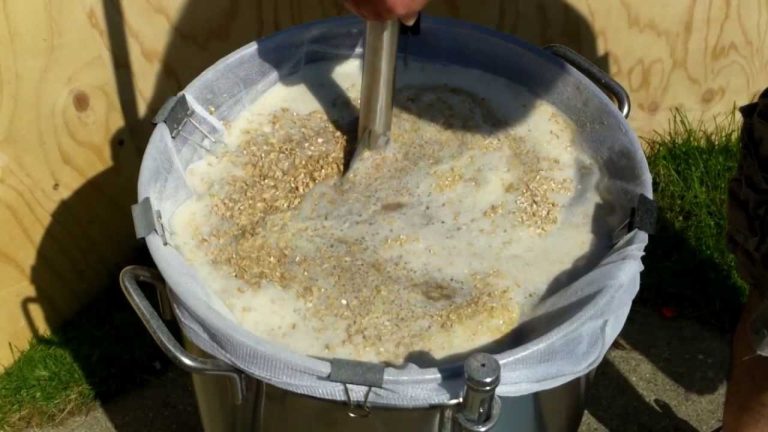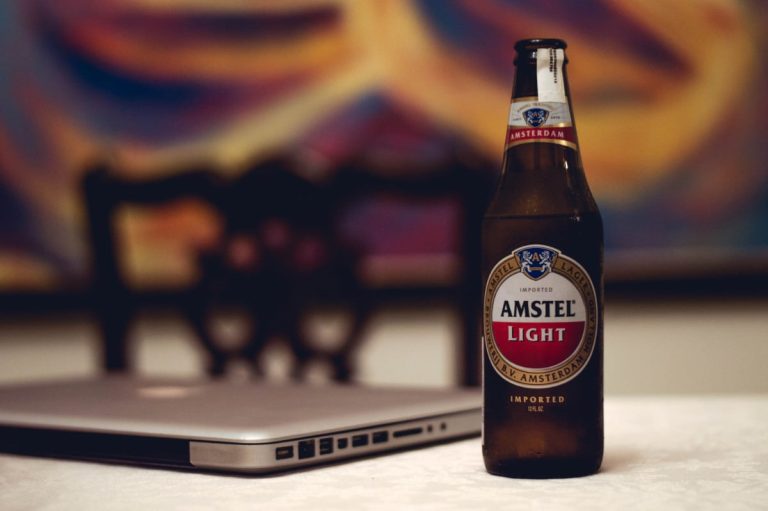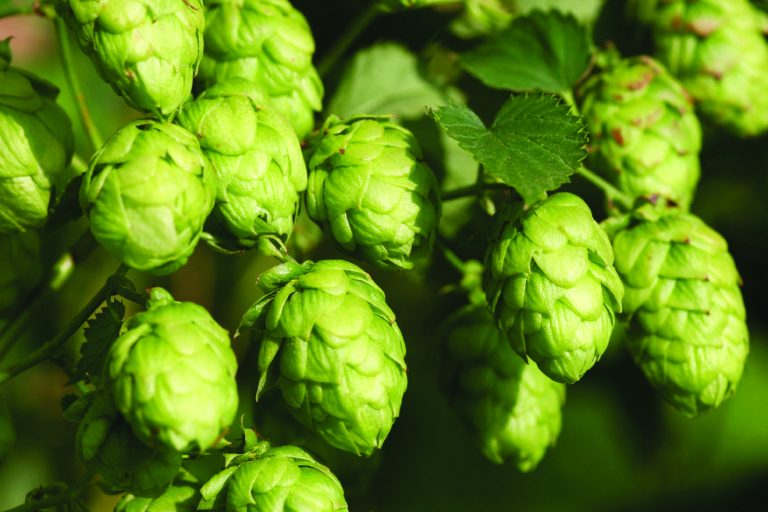Every Single Way to Clarify Your Homebrew Explained
Some beer styles require a haze such as Hefeweizens, Wits or Hazy IPAs. However, people brewing these styles are not who this article is for. There are some style purists that need to have their Lagers crispy, their Blonde Ales see through and their Marzens so clear they can read a newspaper through it.
I mostly brew Hazy IPAs, but I can understand and appreciate those homebrewers that want to follow BJCP guidelines and get their beers as clear as possible.
The hazy appearance of a finished beer can have many causes, but they all fall roughly into two groups, biological and nonbiological.
Biological hazes are caused by poorly flocculating yeast strains or an infection by wild yeast strains or bacteria. Unfortunately, little can be done about biological hazes after they appear in your beer.
Nonbioiogical hazes are the particulates that can be dropped out of solution using many of the clarifying agents or other methods we get into below. Nonbiological hazes are produced when malt proteins and hop polyphenols combine to form a protein-polyphenol mix as the beer is chilled. This is referred to as ‘chill haze’, and it forms around 32–45 °F (0–7 °C), and disappears around 68 °F (20 °C).
Pay Attention to the Ingredients
Now, most homebrewers that are making a batch of their favorite “must-be-clear” beer are already staying away from flaked grains, but it is important to note that some grains simply add haze. Adding flaked wheat, oats, spelt, corn, rice, rye or barley into your grist will cause your beer to have some haze to it. The haze from flaked grains in beer stems from the high beta glucan content they have. Beta glucan is a gum produced during the breakdown of the grains’ cell walls.
Heavy dry hopping will also cause a polyphenol haze that will persist for quite a while. My New England IPAs get up to 2 ounces of pellet hops per gallon, and impart a very thick haze into the beer. This haze starts to drop out after a few weeks in the kegerator, if the beer lasts that long. Less hops used in dry hopping will obviously lead to less haze in your beer.
Choosing a yeast that flocculates well is also an option. Some yeasts like the ever popular London Ale III (WY1318) simply add a haze that will not go away with any amount of clarifying agents or cold crashing. Now, this type of yeast would not be used to brew an on-style Marzen, but it is important to note that some yeasts impact clarity in beers and others do not.
Hot & Cold Breaks are Important
Make sure you get a good hot break during the boil phase. Hot breaks help to drop out proteins added from the grains that will in turn, reduce chill haze later on. The best way to do this is to get a good rolling boil going. Soft boils or no-boils will commonly have some haze issues.
Similarly, ensure that you also chill your wort quickly to get a good cold break. I personally use my immersion chiller for this which takes about 20 minutes to go from boiling to pitching temperature. There are a few other systems like counter flow chillers and plate chillers that work fine as well.
Use Clarifying Agents
There are 3 categories of additions that can help clarify your beer: kettle finings, enzymes and finishing agents. All are used at different times in the brewing process.
Kettle Finings
The most commonly used kettle finings are Irish Moss and Whirlfloc. Add these at the last 10 minutes of the boil.
Irish Moss is red seaweed which contains carrageenan, a thickening agent, which “sticks” to proteins and polysaccharides, causing them to coagulate and fall out of suspension. I throw about a tablespoon of Irish Moss (plant not powder) per 5 gallons of wort into the kettle with 10 minutes left. I’ve kind of stopped using this as I never saw much of a difference in final clarity, and apparently I’m not the only one.
Whirfloc is purified carrageenan powder extracted from Irish Moss. Whirlfloc is used the same way as Irish Moss, but is much more effective due to its increased potency. I’ve actually seen a lot of New England IPA recipes use Whirlfloc to help drop the unwanted particulates out, leaving the stable haze behind. I’ve tried it a couple of times, but I never really noticed much of a difference in the NEIPA style.
Enzymes
Pectinase is a pectic enzyme that helps clear pectic haze from cider or fruit beers. It is best to add it before fermentation as it doesn’t work great with alcohol. While pectin is seen more as a component of haze by most, larger breweries use it to clarify. But the use of pectin also requires filtering, and that simply does not work for us operating on the home brewing scale.
Clarity Ferm is an enzyme sold by White Labs that eliminates chill haze. It works by breaking down sensitive (haze-active) polypeptides during fermentation, similar to how Pectinase works in cider or fruit beers. You add this to your wort the same time you are pitching your yeast. It also has the benefit of significantly reducing gluten in beer, which would be huge for those with gluten allergies.
Finishing Agents
Finishing agents are added post fermentation, directly into the primary or secondary fermenter. Most operate as charged ions in solution that will cling to all the oppositely charged particulate in suspension. As they form larger clumps together, they fall out and to the bottom.
Gelatin works similar to carageenan products, as it “sticks” to haze causing particles and causes them to drop out of solution. Use gelatin cold-side, right before packaging. Gelatin works extremely well and is the most popular of the finishing agents. However, vegetarians take note: gelatin is not vegetarian.
To use gelatin in a 5 gallon batch, take one teaspoon of gelatin powder and stir it into 1 cup of room temperature pre-boiled water. Wait 10 minutes, then stir until fully dissolved. If all the gelatin doesn’t dissolve, use the microwave to heat it up, but do it in short bursts. Let it cool back to room temperature, then add it to the keg or to your bottling bucket. This works best if you’ve cold crashed beforehand, and your beer is cold. Add gelatin after fermentation has occurred, then cold-crash in a fridge for anywhere from 3-10 days. Liquid gelatin can be used as well. We suggest a dosage of 1/3 ounce (10 mL) of it immediately after cold crashing a full 24 hours.
Biofine Clear is colloidal silicon dioxide and works similar to gelatin or carageenan. Biofine Clear is the vegan alternative to gelatin, and in my opinion works almost as well. To use it, you can add about 2 tsp to your 5 gallon keg or bottling bucket. Similar to when adding gelatin, the beer must be cold first. Some have had problems finding Biofine Clear, so look for BrauSol P or BierSol instead.
Isinglass is just a more marketable name for dried and ground up swim bladders of fish, traditionally sturgeon. However, most isinglass that is commercially available use tropical fish varieties. Anyway, because of this interesting fact, it is also not vegan or vegetarian friendly. With centrifuges and advanced filtration techniques, the use of isinglass in the commercial brewing process has declined over the years. However, it is still occasionally used by home brewers.
Spakolloid is produced from seaweed and is commonly used in winemaking. Sparkolloid carries a positive charge and thus combines with negatively charged particles, removing them from the wine. It should only be used on wine which has been racked at least one time. Mix 0.5 to 2 grams ( 1 to 1.5 tsp) of Sparkolloid in 30 ml (1 fluid ounce) of water per gallon of wine to be fined. Heat to boiling in a double boiler and simmer for half an hour. Sparkolloid settles out within a week, at which point the wine should be racked again.
PolyChar (PVPP) is a finely ground and non-soluble plastic compound. A PVPP clarifier removes both haze causing polyphenols and yeast cells. Mix 2 tablespoons (or 5 g) with one cup of sanitized warm water and gently stir into five gallons beer, let stand for 3-10 days then rack off into a secondary vessel.
Bentonite Clay is a natural, clay-like material of volcanic origin. It is often combined with Sparkolloid, and used in winemaking to get both polarities working together. Bentonite is an absorptive and colloidal clay substance used for quite some time by vintners for clearing proteins from wine.
Super Kleer derives from shell fish. It is an excellent all-purpose fining for beer or wine. It should clear your beer anywhere between 12-48 hours after adding it to the secondary fermenter. Super Kleer is a combination of Kieselsol and Chitosan, which combines positive and negatively charged ions for maximum effect. Combine Kieselsol and Chitosan for best results.
By far the most common approach is using Whirlfloc in the boil and gelatin in the keg. This combination is cheap and extremely effective.
Cold Crashing Helps
You can cold crash your beer by putting the fermenter in a fridge at a minimum 24-48 hours before packaging. Chill haze tends to drop out better below 36° F, so keep that in mind when setting your fridge temperature. Cold crashing for multiple days work best to help compact the trub at the bottom of the fermenter.
The only downside to cold crashing to achieve clarity is that it works very slowly. While a 24-48 hour timeframe will work, it may take weeks for your beer to clear appropriately using this method. Cold crashing doesn’t work nearly as fast as fining agents do.
Practice Patience
Lastly, practice some patience. If your beer is hazy and already packaged, let gravity and refrigeration work their magic. If your beer spends enough time in a cold place and undisturbed, it should eventually clear up… just give it some time.






